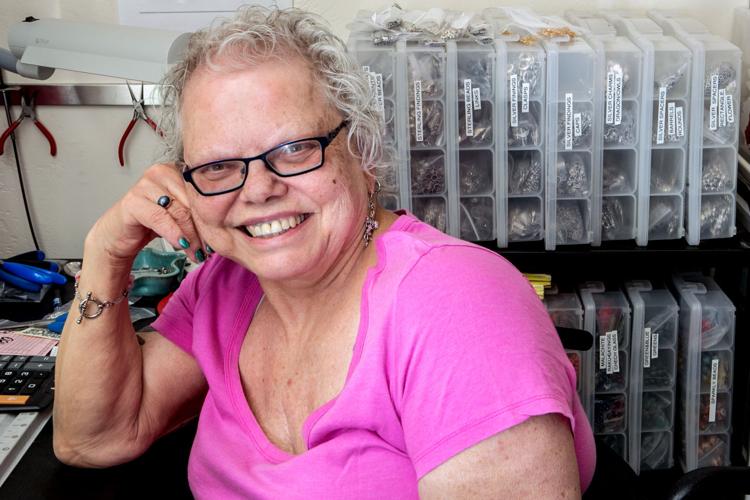(Column updated)
Will Humble used to be a skeptic.
He was the director of Arizona’s Department of Health Services when voters were asked to consider approving medical marijuana in 2010. He publicly opposed it.
But then the initiative passed, and Humble gradually put a system together, as required by the new law, to license dispensaries and approve customers. He didn’t like it, but he did it.
Now, though — two years after leaving public office — Humble is a believer. He’s convinced that medical marijuana can work against chronic pain and some other conditions, though it also poses some risks.
“I changed my mind,” he told me Tuesday.
And that suggests an interesting possibility now that we are officially in an opioid overdose emergency, as Gov. Doug Ducey declared Monday. The problem that has led to the growth of addiction and overdoses is too many opioid pain prescriptions, said Dr. Cara Christ, the current state health director.
What if there is some other, less addictive substance that can work on pain? After the National Academy of Sciences published a detailed assessment of what marijuana works for and what harms it causes, Humble sees it as part of the solution.
“When the January report came out that said there was substantial and conclusive evidence that marijuana is effective in managing chronic pain, that’s when I changed my mind and became a believer,” said Humble, now the director of the Arizona Public Health Association.
Now he thinks marijuana is one of the options that should be offered for relieving chronic pain and reducing opioid use.
There are plenty of people who say they have already figured that out. I talked with one Tucson woman, Mary Beth Roberts, who told me she took opioid pain relievers for neck pain for at least a decade. She didn’t get addicted, but she had to take increasing amounts to make a dent in the pain, she said.
“I just kept taking them because I didn’t have any other alternatives,” she said.
Early last year she got a medical marijuana card and stopped taking the opioids.
“I’ve been to Barrow (Neurological Institute, in Phoenix), I’ve been all over the place, and I just wanted to get rid of the pain,” she said. “The marijuana is the only thing that has ever really touched it.”
She eats half a medical marijuana edible in the morning, and a chocolate before bed. So far, so good, said Roberts, 69.
The National Academies of Sciences report says there is conclusive or substantial evidence that cannabis or cannabinoids (marijuana and its derivatives) “are effective for the treatment of chronic pain in adults.” The same level of evidence says they are effective in reducing chemotherapy-induced nausea and vomiting and in multiple sclerosis-induced spasticity symptoms.
The report lists dozens of other conditions for which there are lower levels of evidence that marijuana may prove effective in treating. It also says there is substantial evidence of an association between marijuana smoking and respiratory illnesses, and between marijuana use and schizophrenia and other types of psychosis, among other problems.
The picture it paints is of a drug with potential benefits and harms.
But other new research also suggests medical marijuana can reduce opioid-related problems. A study published in April showed that hospitalizations for opioid dependence and overdoses decreased significantly in states where medical marijuana was legalized. A study by different researchers had similar results in 2014.
Arizona's medical marijuana program is clearly used by many people for recreational purposes. Otherwise, why would medical marijuana sales spike to at least three times the normal level on April 20, the day that marijuana is celebrated worldwide? People don't need more medicine that day.
But for those who do use it medicinally, marijuana itself is expensive, and so is the card that you must obtain to buy it. The card costs $150 every year, a fee that under the law must go to the operation of Arizona’s medical marijuana program.
That fee is too high. I learned that when talking with a medical marijuana customer at a Tucson polling place on Nov. 8, when he showed up just to vote in favor of legalizing recreational marijuana because he couldn’t afford to pay his fee every year. Of course, we voted that initiative down.
The fact that the fee is too high is also demonstrated by this: Over the years the state has accumulated $31 million in medical marijuana fees that is just sitting in an account because it is not needed to operate the program. Howard Fischer of Capitol Media Services reported last month that this fiscal year alone — the year that ends June 30 — the state had collected $19.9 million in fees, but the program had only cost $7.8 million.
Patients have sued to force the state to reduce the fees, but a judge ruled last month that she has no authority to dictate the fees.
None of this is to say that medical marijuana will be an adequate or healthy substitute for opioids in all pain patients. But the science is showing that it works for some people, is less harmful than opioids, and helps reduce overdoses and hospitalizations.
If the state is serious about addressing the opioid emergency, one thing it can do unilaterally is reduce the excessive medical-marijuana fees that are a barrier to some patients.








